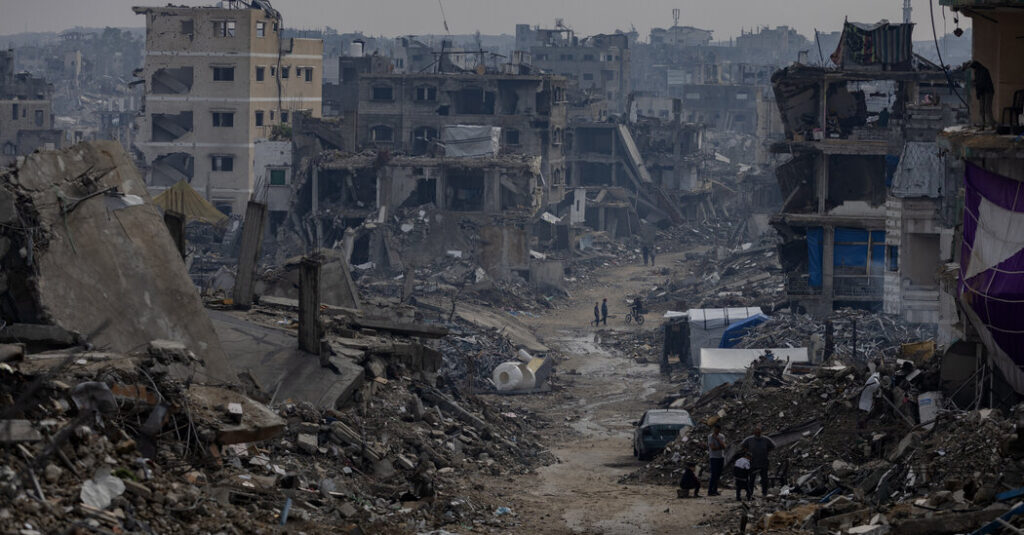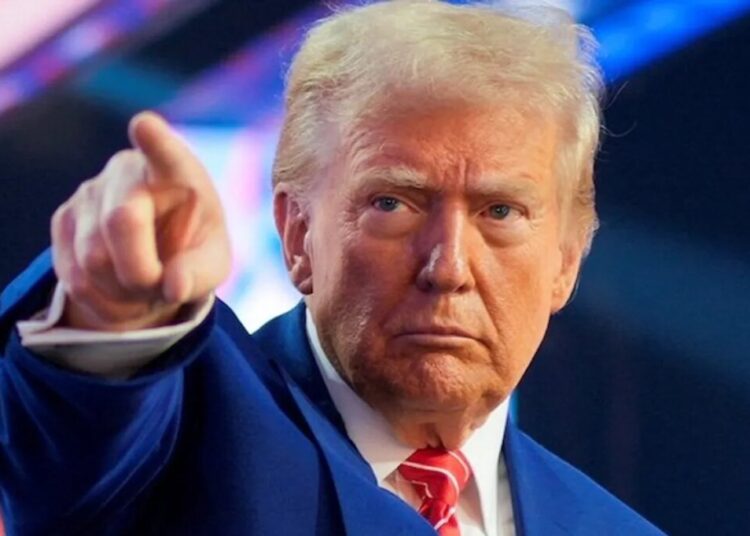The U.N. Security Council’s vote to adopt President Trump’s peace plan for Gaza bought Washington time.
Time to assemble the members of an International Stabilization Force for Gaza. Time to work out the choreography and a realistic timeline for the demilitarization of Gaza. Time to develop the cohort of Palestinian “technocrats” whom the plan imagines administering Gaza. Time to raise tens of billions of dollars to rebuild the enclave.
Mr. Trump has made the plan’s success or failure a test of his prestige and powers of persuasion and persistence. The United States has deployed hundreds of troops, a small army of diplomats and a cavalcade of top officials to Israel to chart the way forward for Gaza and, perhaps farther out on the horizon, for resolving the Israeli-Palestinian conflict as a whole.
The question now is whether Mr. Trump and his administration, confronted with the difficulties still ahead, will have the wherewithal and staying power to see those plans through.
The Security Council’s blessing on Monday was important to the United States because it attached to the Trump peace plan a scaffolding of international legitimacy, meeting a minimum requirement of countries whose help the American administration wants in Gaza.
In particular, and most urgently, the International Stabilization Force is meant to ensure the demilitarization of the Gaza Strip — Israel’s price for pulling all its troops from the territory in the future.
In Gaza, the United Nations resolution was met with subdued optimism. Rajab Abu Tawahina, 35, a father of three boys in Khan Younis, said he saw the potential international intervention as a chance — however uncertain — at a better life.
“If this plan brings some or any stability, if it can finally help us rebuild our lives, then it is something we welcome,” said Mr. Abu Tawahina, a physiotherapist working as a van driver. “But we have learned to wait and see, because promises alone are not enough.”
There is another prerequisite for many countries that are being asked to commit forces to the demilitarization effort: being told upfront whether their troops will be asked to disarm the Palestinian militant group Hamas and its thousands of surviving fighters. They also want to know how they will be asked to do so, exactly, if those fighters do not readily comply.
Both Azerbaijan and the United Arab Emirates, to name two countries much discussed as possible participants, have signaled that they will not take part in the force because of the risk that their soldiers could wind up being asked to fight with Hamas.
And Hamas has made it clear that it will not make the process easy.
The group rejected the U.N. resolution, saying on Tuesday that involving the International Stabilization Force in disarming it would turn the force into “a party to the conflict on behalf of” Israel.
That critique points up another missing element in both the Trump plan and the U.N. resolution — the absence of any official Palestinian participation. Prime Minister Benjamin Netanyahu of Israel has rejected a role for the Palestinian Authority, which administers the West Bank, in Gaza even though it governed the territory until it was forcibly toppled there by Hamas in 2007.
The U.N. resolution at least holds out the prospect of a “pathway to Palestinian self-determination and statehood” and a future role for the Authority, but only after it has completed a reform program that no one has fully spelled out.
Danny Danon, the Israeli ambassador to the United Nations, assured an Israeli radio interviewer on Tuesday that this was a check the Palestinians would find themselves unable to cash.
“If, in the future, the Gazans change their spots” and become peace seekers, then Israel can sit down and talk to them, he said. “The resolution has no teeth.”
It is also unclear whether, even with the U.N. resolution in hand, Arab nations will send troops to Gaza without an invitation from the Palestinian Authority, lest they be denounced as collaborators with Israel in a military occupation.
For Israel, the resolution internationalizes the conflict in a new way and limits the country’s options for action in Gaza. If Egyptian soldiers were to take up posts inside the territory, for example, could Israel risk wounding them in a clash with Hamas?
The problem of demilitarizing Gaza has been staring everyone in the face all along, of course. It is so daunting that the United States has begun planning for a situation in which Hamas retains control of the western half of Gaza, and keeps its weaponry, while reconstruction begins in the Israel-controlled eastern half.
Time may not be on the Trump administration’s side, however.
Experts warn that the longer it takes to make progress on each of the Trump plan’s main provisions, the more the status quo will set in, with ominous implications.
“Disarming Hamas will be a process; it will take time,” said Nimrod Novik, a veteran Israeli peace negotiator. “And if there is no further Israeli withdrawal, however limited, and no International Stabilization Force, and no beginning of reconstruction, then the temporary becomes permanent.”
“And,” he added, “we have a situation where Israel is here. Hamas is there. Each controls half the strip, and the inevitable friction will mean a resumption of fighting.”
To supporters of a two-state solution to the conflict, the Trump administration’s forceful approach to Mr. Netanyahu in achieving the cease-fire in Gaza has been hugely welcome.
But it is also frustrating because it contrasts so sharply with what they see as the Trump administration’s hands-off approach to the Israeli-occupied West Bank, where extremist Jewish settlers have been marauding through Palestinian communities with little consequence recently.
Nadav Tamir, Israel director for J Street, the liberal U.S. pro-Israel lobby, said he wished the Trump administration would adopt a similarly tough-minded and assertive approach to Mr. Netanyahu’s right-wing government over all its dealings with the Palestinians.
He imagined a U.S. headquarters on the West Bank, much as the Trump administration has set up an operations hub for Gaza in southern Israel. He imagined the United States, not Mr. Netanyahu, deciding when the Palestinian Authority had improved itself adequately. And he imagined the Trump administration asserting itself to curtail settler violence.
If the administration were as aggressive with Israel on the West Bank as it has been in Gaza, he said, “then it could be a great turning point for the region.”
Adam Rasgon and Bilal Shbair contributed reporting.
David M. Halbfinger is the Jerusalem bureau chief, leading coverage of Israel, Gaza and the West Bank. He also held that post from 2017 to 2021. He was the Politics editor of The Times from 2021 to 2025.
The post U.N. Support Propels Trump Gaza Plan, but Road Ahead Is Still Rough appeared first on New York Times.




